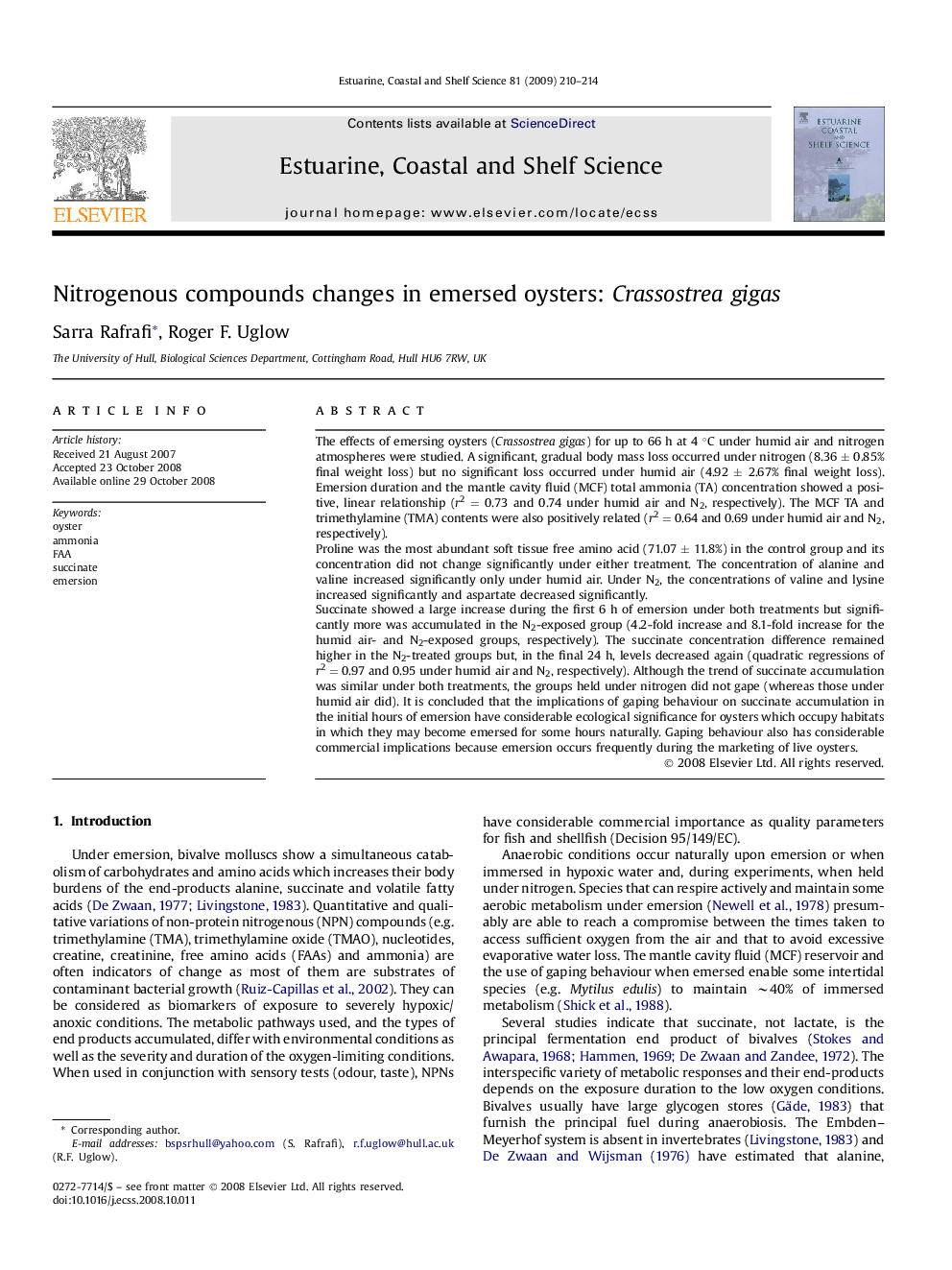| Article ID | Journal | Published Year | Pages | File Type |
|---|---|---|---|---|
| 4541392 | Estuarine, Coastal and Shelf Science | 2009 | 5 Pages |
Abstract
Succinate showed a large increase during the first 6Â h of emersion under both treatments but significantly more was accumulated in the N2-exposed group (4.2-fold increase and 8.1-fold increase for the humid air- and N2-exposed groups, respectively). The succinate concentration difference remained higher in the N2-treated groups but, in the final 24Â h, levels decreased again (quadratic regressions of r2Â =Â 0.97 and 0.95 under humid air and N2, respectively). Although the trend of succinate accumulation was similar under both treatments, the groups held under nitrogen did not gape (whereas those under humid air did). It is concluded that the implications of gaping behaviour on succinate accumulation in the initial hours of emersion have considerable ecological significance for oysters which occupy habitats in which they may become emersed for some hours naturally. Gaping behaviour also has considerable commercial implications because emersion occurs frequently during the marketing of live oysters.
Related Topics
Physical Sciences and Engineering
Earth and Planetary Sciences
Geology
Authors
Sarra Rafrafi, Roger F. Uglow,
